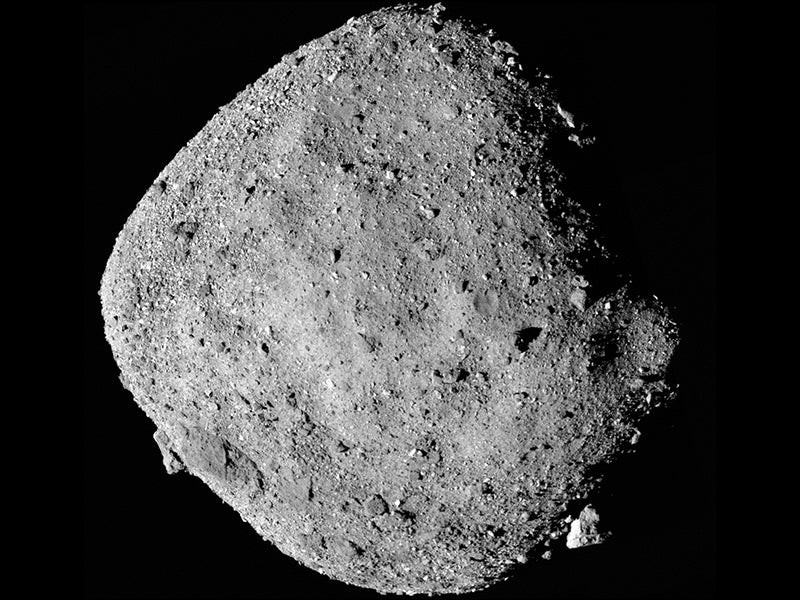Asteroid Ryugu contains darkest material in the known solar system
Only five other meteorites similar to Ryugu have ever come to Earth

Your support helps us to tell the story
From reproductive rights to climate change to Big Tech, The Independent is on the ground when the story is developing. Whether it's investigating the financials of Elon Musk's pro-Trump PAC or producing our latest documentary, 'The A Word', which shines a light on the American women fighting for reproductive rights, we know how important it is to parse out the facts from the messaging.
At such a critical moment in US history, we need reporters on the ground. Your donation allows us to keep sending journalists to speak to both sides of the story.
The Independent is trusted by Americans across the entire political spectrum. And unlike many other quality news outlets, we choose not to lock Americans out of our reporting and analysis with paywalls. We believe quality journalism should be available to everyone, paid for by those who can afford it.
Your support makes all the difference.The asteroid Ryugu has some of the darkest and oldest material in our solar system, according to analysis of the cosmic object.
Samples from the asteroid were extracted in 2019 by Japan’s Hayabusa 2 probe, travelling more than 300 million kilometres from Earth and spending over a year on the rock to collect them.
Scientists at the time hoped that data collected from material under the asteroid’s surface could reveal information about the universe’s condition 46 billion years ago – especially with regards to how organic materials may be distributed across other planets in our galactic neighbourhood.
"It’s not just rare, it’s a very precious sample," Professor Masaki Fujimoto, who led the team that retrieved the Ryugu capsule, told ABC.
"It will tell us about the very early history of the solar system, and the process that made Earth habitable."
The 5.4 grams of material taken from the surface contain many unusual compounds, including organic and water-bearing molecules, New Scientist reports.
“Although most of these compounds are minor in terms of quantity – a few per cent at maximum – they have a high potential in tracing some of the processes that occurred in the earlier stages of the formation of the solar system and, later on, Ryugu’s parent body,” said Cédric Pilorget, an associate professor at the Institute of Space Astrophysics University of Paris-Saclay.
Scientists used techniques that would preserve the integrity of the asteroid, like hyperspectral microscopes that capture hundreds of images using light at different wavelengths.
However, the researchers found that the Ryugu sample was notably dark – much more so than other meteorites that we have studied – as it only reflected around two per cent of the light that hit it.
This suggests either that Ryugu has a different chemical makeup or that its journey through Earth’s atmosphere brightens meteors as they go through it.
Unlike other asteroids, the Ryugu sample also had a fine texture and did not contain any of the melted minerals – called chondrules – that scientists expected.
This suggests that the asteroid is the parent body of a rare type of meterorite called a CI chondrite – of which only five have ever made their way to Earth because of how easily they disintegrate in water. The chemical compositions of these meteorites is similar to a gasless Sun.

Join our commenting forum
Join thought-provoking conversations, follow other Independent readers and see their replies
Comments